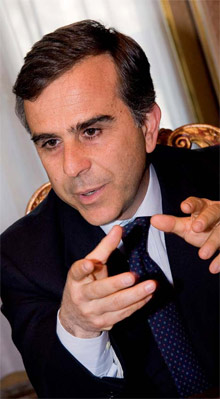You are in:
- Start
- Interviews
- Arturo Semerari: President of ISMEA. The Italian Institute for Services to the Agricultural and Food Markets. Rome - Italy
Arturo Semerari: President of ISMEA. The Italian Institute for Services to the Agricultural and Food Markets. Rome - ItalyAGRÍCULTURAL
Arturo Semerari was born on 21 October 1959 in Taranto, in the Puglia region of southeast Italy. Coming from a farmers’ family, he had been concerned about the ups and downs of the agricultural sector from an early age. He graduated in Agricultural Engineering from the University of Padua, specialising in Agricultural Economics at the University of Milan. He held several posts in both the public and private sectors, in this case in the consultancy sector, before becoming President of ISMEA in 2002.
“Europe is the world’s biggest importer of agricultural products, surpassing even the United States”“It is important that money for agriculture should not be subsidising speculative activities, and one way of doing this is through agricultural insurance”. This is the view of the President of ISMEA1 who in this interview, tells us about the Italian system for protecting agricultural income and gives us an overview of the trends emerging in this field in the European Union.
Where are we right now in Europe as regards
agricultural insurance?
We are working on reforming the Common
Agricultural Policy, the CAP. This means that we
have to know what systems exist in the various
European countries, because right now, besides
having national laws, it is important that we
achieve a consensus for Europe and common
legislation for all the countries.
How far can we compare what Europe is
doing in relation to the movement of agricultural
products with other countries or areas
of the world?
Generally speaking, you have protectionist countries
like Japan, Switzerland and Norway. In the
European Union we also have a reputation for
protectionism, but in fact, this is not true. Europe
is the world’s biggest importer of agricultural
products, surpassing even the United States.
We import from Africa and Latin America with
the prices differential. However, the products involved
are not controlled in their countries of origin but by the multinationals, so ultimately, they
are the ones benefiting most from the business.
In Italy, land is very expensive because we have very little space and a large population. With these determining factors, farming is not noted for its profitability
What proportion of Italy’s gross domestic product
–GDP– does Italian agriculture make up?
Around 2%. But the food sector accounts for
16% of GDP and after engineering, it is the
second largest industrial sector.
Are agricultural multinationals interested in
investing in this field?
Not in Italy. One of the problems is that farmlands are being abandoned. In Italy, plots of
land are very expensive because we have very
little space and a large population – bigger
than Spain’s. We have many hills and mountains,
areas where nothing can be grown. With
these determining factors and the price of land,
farming is not noted for its profitability.
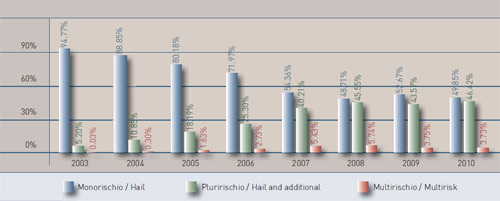
Subsidised agricultural insurance. Evolution of the market share by type of insurance product
| 2003 | 2004 | 2005 | 2006 | 2007 | 2008 | 2009 | 2010 |
|---|---|---|---|---|---|---|---|
| Rural multirisk policies included | |||||||
| 3,333,901 | 3,710,212 | 3,810,222 | 3,789,132 | 4,379,809 | 5,436,140 | 5,131,045 | 5,312,829 |

Subsidised agricultural insurance. Average market rate (crops)
Third presidential term with ISMEA
How did you get into insurance? And how did
you become the President of ISMEA?
Before the year 2000, ISMEA had embarked on
a series of reforms. The then Minister, who is
now Chairman of the European Commission
on Agriculture, appointed a Commissioner to
unite the various institutions that were to shape
the new ISMEA. Through my knowledge as a farmer, I could see that the Italian agricultural
insurance system was not good – it was inefficient.
In 1998 I worked as a consultant to the
Ministry of Public Administration, which was in
charge of several economic reforms, including
agrarian reform. I was the one responsible for
drafting the report on the reform of ISMEA, in
which I included the reasons for having agricultural
insurance and also the need to reform
credit. One consequence of all this was that I
was appointed President of ISMEA in 2002, a
position that I have held ever since. I am now
its President again for the third and final time.
What were ISMEA’s functions before and after
the reform?
Before the reform, ISMEA was an institution
devoted to performing studies for the Ministry
of Agriculture on agricultural, market, development
and shopping-basket issues amongst other things. After the reform, it began working
on agricultural insurance and credit. In the
insurance field, it acts as a public reinsurer in
Italy. It carries out studies for the Ministry and
defines the performance parameters, statistics
and various forms of insurance. In the credit
field it manages two guarantee funds, one for
banks working in the agricultural sector and
another for peasants and farmers wanting
guarantees.
ISMEA was an institution devoted to performing studies for the Ministry of Agriculture on agricultural and market issues. After the reform, it began working on agricultural insurance and credit
Are there any other functions besides these?
Yes, we manage a purchasing fund. We pay for
farms and then, the farmers make repayments
over a period of fifteen to thirty years.
Is the Common Agricultural Policy, the CAP,
well orchestrated in Europe?
The situation in Europe has been complicated
for many years. Apart from Spain, Italy or
France, politicians do not consider agriculture
to be economically useful for Europe, and this
is a problem, because we have a very powerful
agriculture, which also keeps people in rural
areas. It is a strategic sector, because agricultural
development provides raw materials,
something Europe has too little of to meet demand.
The reform we now have is not the right
one for Europe. After 2013, it may be possible to
carry out major reforms with a different vision.
Now is the time to consolidate the agricultural
budget beyond 2013. It is very important that
we should work for farmers who create business,
not for ones who speculate and have
no farms. How do we do that? With insurance
that protects farmers’ incomes and ensures
certain conditions for carrying out the activity.
The problem in Italy and Spain and elsewhere
is that farmers face many difficulties when
seeking finance from banks which do not understand
their working conditions and the risks
involved in their activity.
The problem in Italy and Spain is that farmers face many difficulties when seeking finance from banks which do not understand their working conditions and the risks involved in their activity
Even so, France has major financial institutions
linked to the agricultural sector, and
Spain has its rural savings banks.
Yes, that helps. France has Crédit Agricole,
and in Italy there are also some organisations
that support farmers, like the ones in
Spain.

ISMEA Pool. Situation as at 30/09/2011 and comparative. Figures in EUR
| Year | 2008 | 2009 | 2010 | 2011 |
|---|---|---|---|---|
| Capacity | 207,300,000 | 197,300,000 | 185,000,000 | 168,500,000 |
| Insured value | 263,797,398 | 147,186,907 | 113,713,321 | 183,534,526 |
| Pool exposure | 149,441,455 | 108,040,274 | 93,672,869 | 134,681,254 |
A fringe benefit
Do Italian farmers value the benefits of
ISMEA’s work? Or do they demand more?
We do work for farmers’ benefits, but we do
not do so directly, because we work through
insurance companies and banks. We are
reinsurers and we offer guarantees to banks.
ISMEA’s work is known and recognised by
farmers, and in fact, we have granted many
guarantees in respect of loans to farmers – to
the tune of over 10 billion euros.
In Italy, is there any pool of insurers that
makes use of your financing and protection
capacity as a reinsurer?
Not in Italy. Insurance pools are prohibited as
they are understood in Spain. There is only one
insurance pool, or rather, a reinsurance pool,
which is of both a public (represented by ISMEA)
and private nature. It is licensed by the competition
supervisory authority and works with nine
types of insurance.
Could you explain a little more how it works?
Our pool is the reinsurer for agricultural insurances.
In 2004 it began working with ISMEA’s
insurance fund, and in 2008 that fund began
working with private insurers who know the
market. All this led to a new type of insurance,
tailored to the needs of the target groups – that
is to say, farmers. The first two years’ results
were not good. There were many losses due to
weather problems. 2009 and 2010 were not good
years either, due to the problem with financing
the solidarity fund. The premium subsidy budget
suffered permanent delays due to the impact of
the crisis. 2011 is about to be closed.
It is important that money for agriculture should not subsidise other –sometimes speculative– activities, and one way of achieving this is through agricultural insurance
Does ISMEA have any environmental protection
aspect, given that European subsidies are
pointing in that direction?
Not for the time being, although the trend in
Europe is indeed to support environmental protection.
It is important that money for agriculture
should not subsidise other –sometimes
speculative– activities, and one way of achieving
this is through agricultural insurance. The
role that farmers play is very important for a
sustainable environment. But we must help
farmers to work on farms and, indirectly, on the
environment. Even so, the tendency is to think
only about the environment, without appreciating
the role of the farmer.
How often do you have to deal with catastrophic
events, and which ones are most frequent?
Disasters happen every year. The effects of climate
change are huge. Hail, ice and rain are
the ones that affect us most.
How do you see Spain as far as agricultural
insurance is concerned?
Agroseguro is a fantastic system for covering
agricultural risks but, due to the nature of our
legislation, it is not possible to work that way
in Italy.
ISMEA
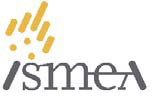 The Italian Institute for Services to the Agricultural
and Food Markets, ISMEA, is a
public body created when the Institute for
Studies, Research and Information on the
Agricultural Market2 was merged with the
Fund for the Promotion of Peasant Property3,
under the Legislative Decree of 29
October 1999.
The Italian Institute for Services to the Agricultural
and Food Markets, ISMEA, is a
public body created when the Institute for
Studies, Research and Information on the
Agricultural Market2 was merged with the
Fund for the Promotion of Peasant Property3,
under the Legislative Decree of 29
October 1999.
Through the companies that it controls, ISMEA offers information and research services and provides insurance and financial capacity, as well as guarantees, to agricultural enterprises. It also facilitates their relations with the insurance and banking sector, promoting competitiveness and reducing the risks inherent in their production and market activities.
ISMEA supports the consolidation of regions and their land through the expansion of farmland ownership and generational renewal in agriculture, based on specific aid approved by the European Commission.
(1) Istituto di Servizi per il Mercato Agricolo Alimentare.
(2) Istituto per Studi, Ricerche e Informazioni sul Mercato Agricolo.
(3) Cassa per la Formazione della Proprietà Contadina.
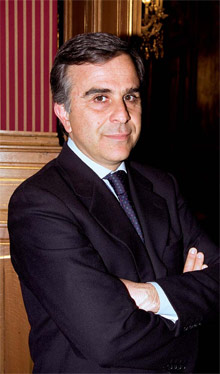
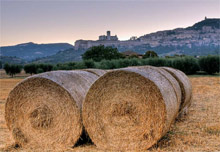 Farming land close to the city of Asis. Italy
Farming land close to the city of Asis. Italy Vineyards at Piedmont Region. Italy
Vineyards at Piedmont Region. Italy

